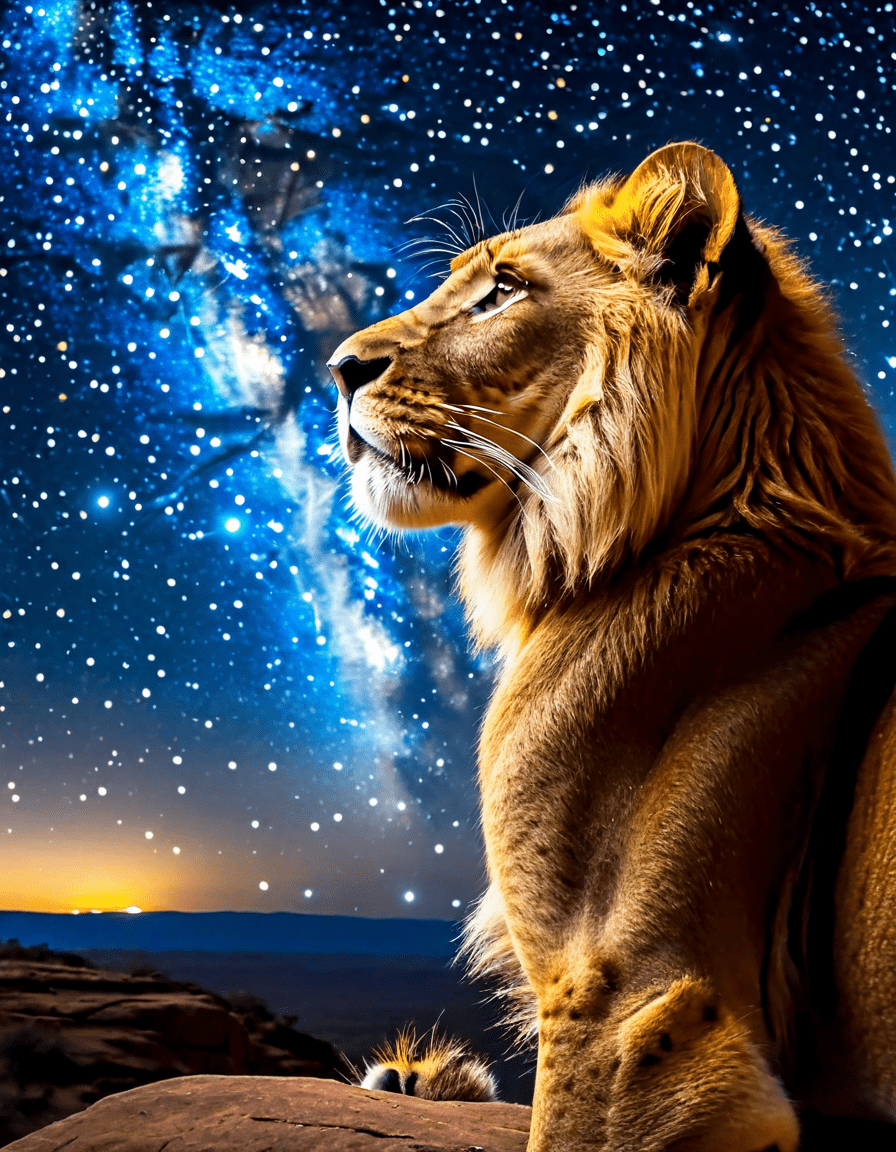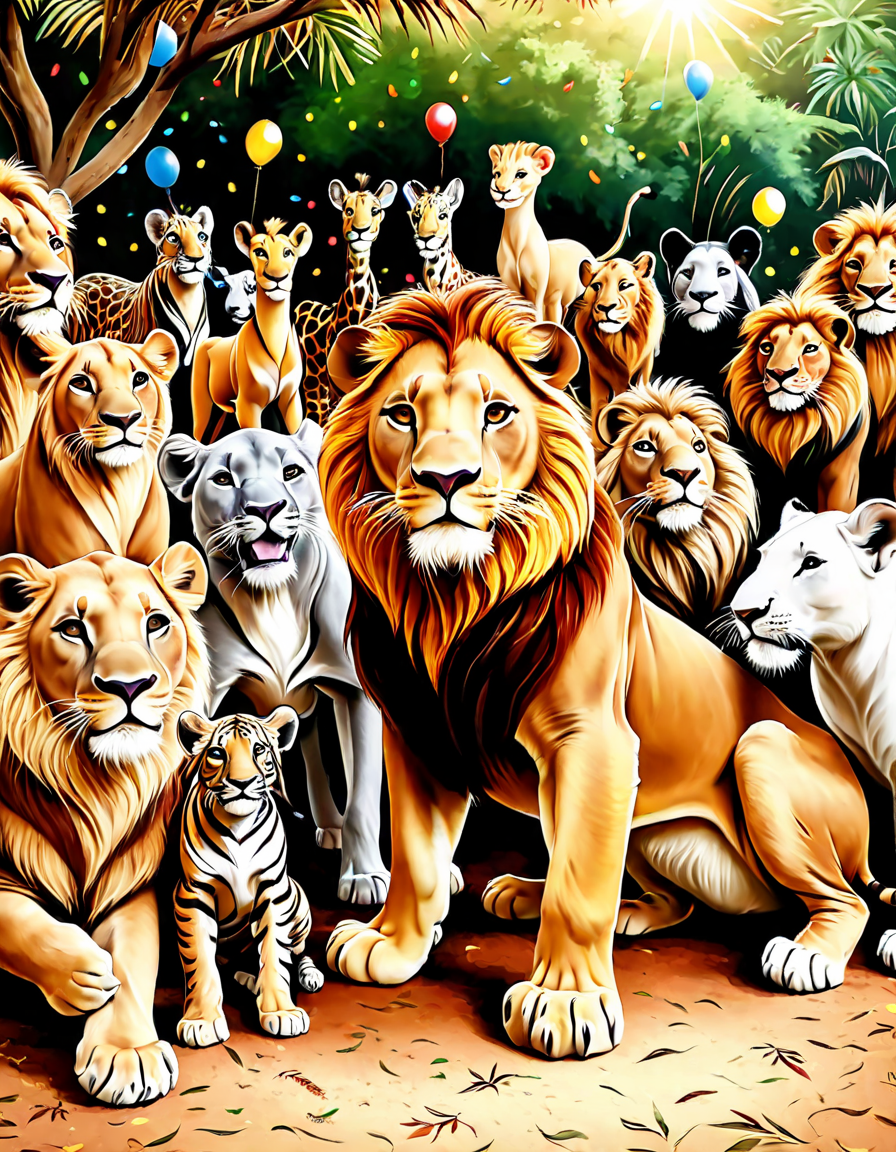Simba, the beloved lion from Disney’s “The Lion King,” has captivated audiences for decades with his touching journey of self-discovery. From his first roars in 1994 to his more recent appearances, Simba’s evolution has not only shaped his character but also influenced animation history and pop culture at large. Join us as we explore Simba’s incredible journey through seven pivotal moments in his evolution, tying them into broader cultural conversations that resonate with film lovers everywhere.

1. Seven Key Moments in Simba’s Evolution Through Time
Simba’s story is packed with richer meaning when viewed through the lens of various pivotal events. Here’s a closer look at seven key moments that have defined Simba’s narrative:
When “The Lion King” burst onto the scene in 1994, it marked a renaissance in Disney animation. Simba’s quest to balance responsibility with the desire for freedom resonated deeply with audiences, driving the film to a staggering $968 million at the box office. This success not only launched a franchise bursting with merchandise, sequels, and spin-offs but also established Simba as a cultural touchstone.
Fast forward three years, and the stage version of “The Lion King” made its debut on Broadway. With mesmerizing puppetry and a soul-stirring score by Elton John and Tim Rice, the musical brought a new layer of depth to Simba’s character. Themes of community and belonging rang true, making the story feel more universal in nature. This adaptation solidified Simba’s spot as a lasting icon that transcends generations.
The live-action retelling released in 2019 used groundbreaking CGI to present a more realistic Simba. Though responses were mixed, the remake demonstrated Simba’s enduring relevance and vast appeal to both new and old fans. It sparked lively discussions surrounding legacy, heritage, and the growing complexities of filmmaking techniques in our digital age.
Pop culture today is rife with influential figures, and Simba’s journey mirrors others like Maluma, the Latinx musician who has become a global ambassador for culture and empowerment. Much like Simba’s evolution from cub to king, Maluma’s rise represents a powerful journey of self-discovery. Simba and Bambi also share parallels in their narratives of growth and resilience, showcasing how these characters ignite discussions about representation in storytelling.
Simba’s universe has broadened through various media, including video games and animated series like “The Lion Guard.” New characters such as Jango and Pepe have enriched Simba’s world, inviting fresh audiences while staying true to the themes established by our favorite lion. This evolution emphasizes the ever-expanding landscapes available for storytelling, capturing the imaginations of fans young and old.
As streaming services like Mubi gain popularity, they’re reshaping how we view animated films. Mubi’s curated selections highlight Simba’s story alongside art house projects that echo themes of identity, purpose, and moral questions. This evolving approach enlivens the conversation about classic narratives and how they intersect with contemporary storytelling.
The magic of crossovers in modern media means that characters like Simba can appear alongside the likes of Rambo and Gumby. These mash-ups not only entertain but also delve into multi-layered themes of identity and survival. Simba shines brightly in this dynamic landscape, showcasing how even animated figures can grapple with the weights of nuanced storytelling.

2. Analyzing Simba’s Character Development and Moral Complexity
Simba’s character arc isn’t just a childhood story; it’s a profound journey steeped in moral lessons and complexities. By looking closely at his evolution, we discover rich allegories perfect for discussion.
3. The Role of Simba in Contemporary Conversations on Identity and Leadership
Simba’s journey is increasingly relevant, as it encapsulates our current explorations of identity and leadership. His evolution from carefree cub to responsible king mirrors many contemporary leadership discussions.
As we see figures like Maluma, who blends music with empowerment messages, Simba’s journey inspires real-world change. His story serves as a beacon for aspiring leaders navigating complex cultural landscapes, resonating deeply with global audiences.
Moreover, Simba’s moral complexities invite conversations about authentic leadership. In a world questioning authority, his tale reflects larger issues surrounding trust and responsibility. Such ongoing discussions highlight how Simba isn’t merely an animation legend; he’s a symbol of leadership that transcends time and culture.
Through examining Simba’s extraordinary journey, we celebrate not just a beloved character but a narrative rich with meaning and relevance. Simba’s evolution prompts us to rethink our personal paths, identities, and the legacies we leave behind. From exploring iconic moments to debating moral complexities, his story is a vibrant tapestry that continues to inspire discussions among film enthusiasts and everyday viewers alike. So whether you’re streaming on a platform like Mubi or singing along to the Broadway musical, remember that Simba’s tale holds profound truths about our own lives and the rich narratives that shape them.
Here’s to Simba—the lion whose journey reminds us that every story matters!
Simba’s Adventure: Fun Trivia and Interesting Facts
Roaring into the Spotlight
Simba, the iconic lion from Disney’s “The Lion King,” has been capturing hearts since his first appearance in 1994. Not just an adorable character, Simba has a much deeper connection to the world of cinema. Did you know that his movement and mannerisms were inspired by real lions? The animators studied footage to ensure authenticity. Speaking of unique inspirations, Charlotte Lewiss work in Hollywood shows how real-life figures can influence artistic creations in surprising ways. This blend of reality and animation is what gives Simba his relatable nature.
The Cast of Characters
Each character in “The Lion King” plays a crucial role in Simba’s journey, drawing parallels to classic films featuring diverse casts. For instance, Sabu, a legendary child actor, set a precedent for strong performances at a young age, similar to young Simba’s emotional depth. Plus, the songwriting in the movie, led by the brilliant team behind iconic tracks, solidified the film as a musical treasure. Did you know that Disney’s musical elements have been inspired by theatrical traditions, much like The penguin Episodes seen in various productions? What a twist of fate that the animators took cues from various creative arts!
Legacy and Cultural Impact
Simba’s influence stretches far beyond animation. He stands as a symbol of personal growth and perseverance. In today’s pop culture landscape, we see themes reminiscent of Simba’s tale in different narratives, not unlike explorations found in series such as The Pacific. Moreover, the storytelling techniques developed for Simba have inspired countless films and TV shows, evoking responses similar to what viewers experienced in Chappie cast performances. Isn’t it fascinating how storytelling methods evolve yet maintain emotional authenticity? Whether fans tune into new Reacher Episodes or revisit Simba’s classic story, the lessons learned resonate across genres and generations. So next time you watch “The Lion King, remember that Simba’s journey is timeless and intertwined with rich cinematic history, such as Emma Walton hamiltons contributions to storytelling.





